The budget cuts applied to the Federal Attorney for Environmental Protection (Profepa) in the last decade have diminished its ability to fulfill its main function: to contain the destruction of natural resources.
Workplaces, work tools, equipment and vehicle maintenance, travel expenses. Caring for the environment requires money, says activist Aracely Domínguez, of the Mayab Ecologist Group.
The abrupt decline in economic resources for the institution's operation is reflected in the number of inspections carried out to address, investigate and punish cases of possible environmental crimes.
Profepa is a decentralized body of the Secretariat of Environment and Natural Resources (Semarnat), with technical and operational autonomy, whose main task is to increase levels of compliance with environmental regulations, in order to contribute to sustainable development and enforce laws in this area.
To meet its objectives, it has an organizational structure that concentrates administrative activities in the central office in Mexico City and has operational bases in each of the federal entities, with personnel trained to inspect and determine violations of applicable regulations.
However, the reduction in resources has led to losses in the personnel responsible for carrying out inspections and, therefore, in the operational capacity of Profepa.
According to data from the Ministry of Finance and Public Credit (SHCP), among the budget allocated for 2022, in real terms, considering the inflation factor, over the last 10 years, the resources allocated have a downward trend.
For 2012, the amount allocated to the institution was 1,097 million pesos, while for 2022 the budget was 517 million pesos, considering 2013 as the base year of inflation, the same year used by the SHCP for the current year's budget programming.
This means that Profepa has just under 50% of resources to carry out its functions.
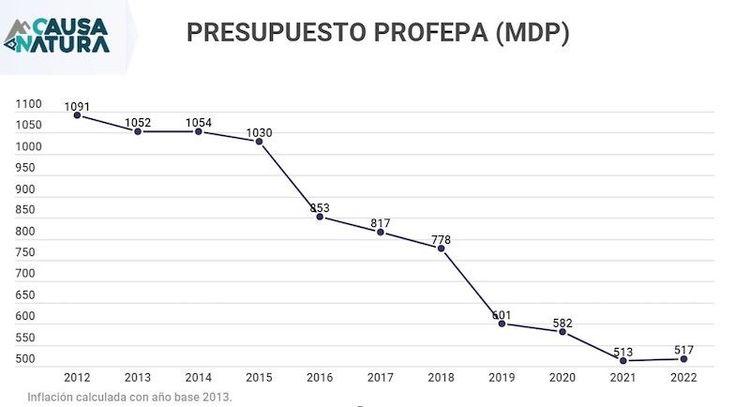
By 2012, Profepa had 714 environmental inspectors, reaching its highest peak in 2014, with 874; however, the reduction began the following year.
In 2021, the most critical year, 443 inspectors were hired, or 49% less than in 2014, based on data from the agency itself.
In 2022, the number of elements in the field was reported to increase to 602; however, the figure is still lower than 10 years ago.
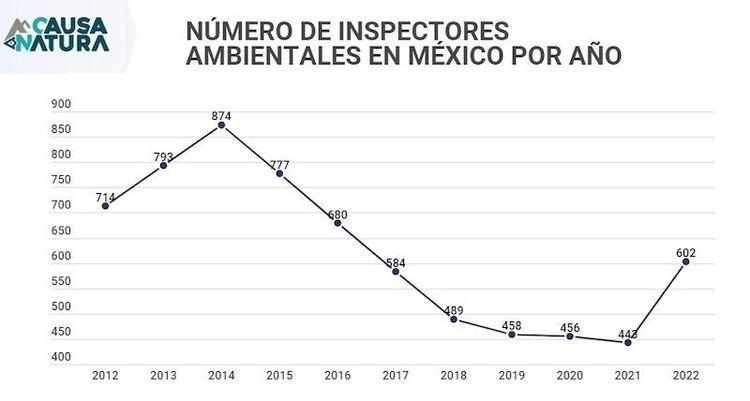
The variation in personnel has not been the same for all states.
While in 2021 there were cuts in almost all states, in Mexico City the opposite happened, the smallest entity in terms of territory in Mexico went from having 22 to 97 inspectors; for this year the workforce grew to 126.
On the other hand, in Jalisco, one of the states with the largest territorial extension in the country, there are only six inspectors working, 12 fewer than 10 years ago.
The states of the country with the highest incidence of crimes against the environment over the past 10 years, registered with the Attorney General's Office (FGR), are Quintana Roo, Chiapas and the State of Mexico, according to data from the Executive Secretariat of the National Security System.
However, all three have suffered staff casualties. Of the 28 inspectors that Quintana Roo had in 2012, now only 14 operate; in Chiapas, where there were 32, there are only 16 left, while in the State of Mexico there are 10 of the 23 who worked a decade ago.
The lack of personnel is directly related to Profepa's capacity to act.
The environmental agency has five types of inspection, depending on the type of possible crime to be inspected: Industrial Inspection; Environmental Impact; Federal Maritime Terrestrial Zone; the General Directorate of Inspection and Surveillance of Wildlife, Marine Resources and Coastal Ecosystems (DGIVVSRMEC) and the General Directorate of Forest Inspection and Verification (DGIVF).
In all areas, 2014 is the year with the most inspections carried out, the same year in which Profepa had the most operational personnel in the field. Starting in 2016, there is a general decline until 2020.
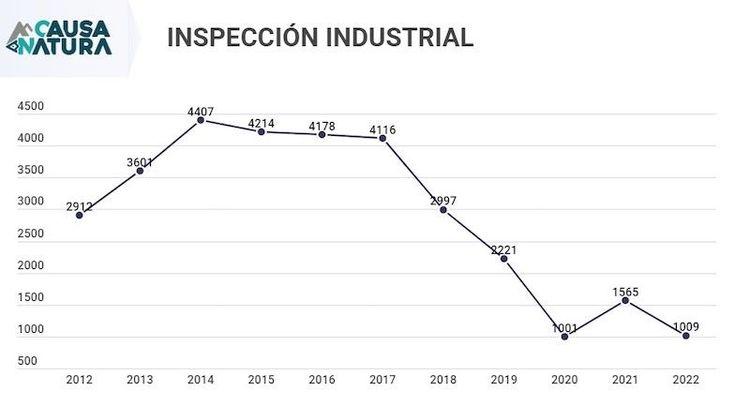
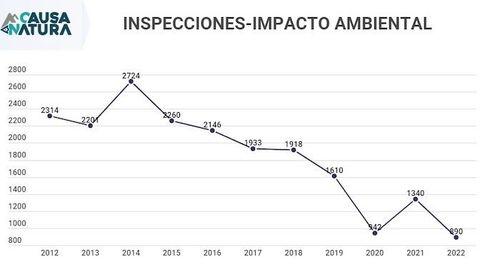
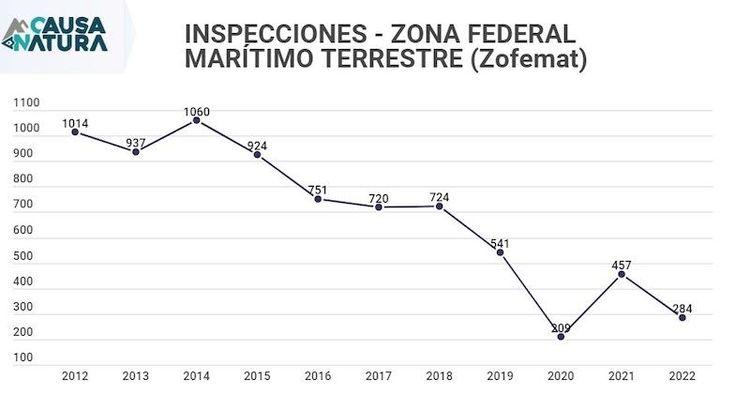
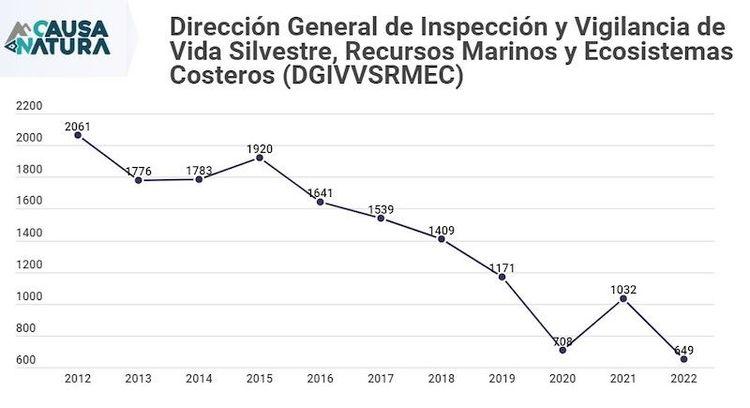
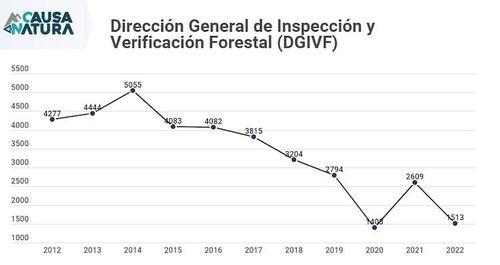
Despite the fact that Mexico City has 126 inspectors available, so far in 2022, only 378 inspections have been carried out, that is, just three for each one. Staff productivity is markedly low compared to other entities. In Quintana Roo, for example, each inspector has performed an average of 14 inspections this year.
Critical of austerity policies in the environmental sector, Aracely Domínguez assured that the institution is inefficient due to budgetary deficiencies and the lack of political will to resolve the situation.
“It speaks of a lack of interest and understanding on the part of the federal government about the value of sustainable management of natural resources. Planting trees is not the proper management of resources, there are many more things that have to be done,” he told Journalism CN.
Dominguez added that in addition to the environmental damage committed by individuals, there are grievances committed by the government itself, breaking regulations and laws in the area for the execution of its projects, as is the case of the Maya Train.
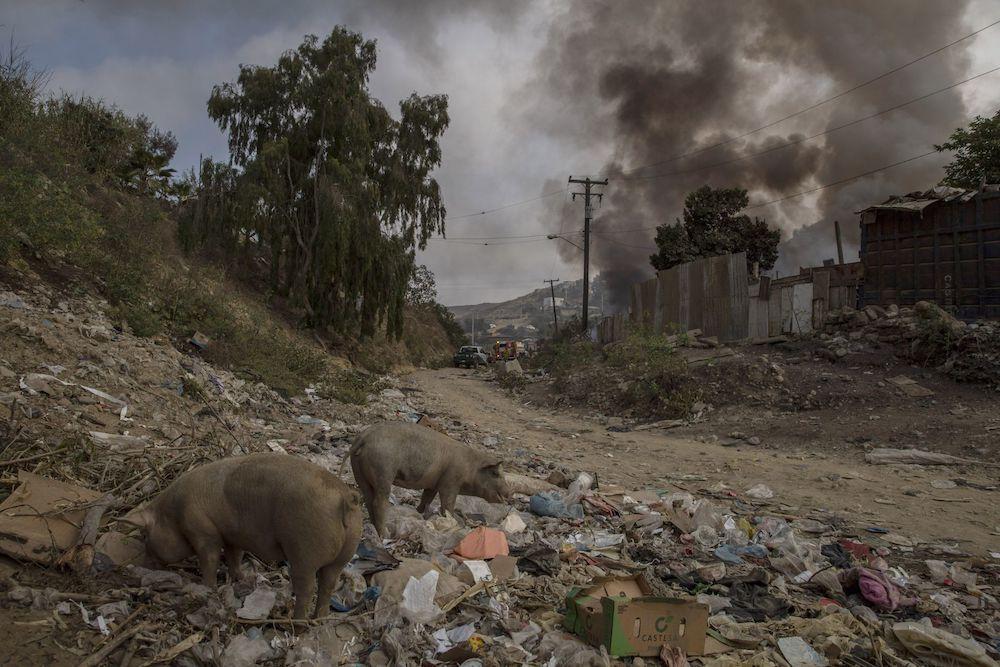


Comentarios (0)